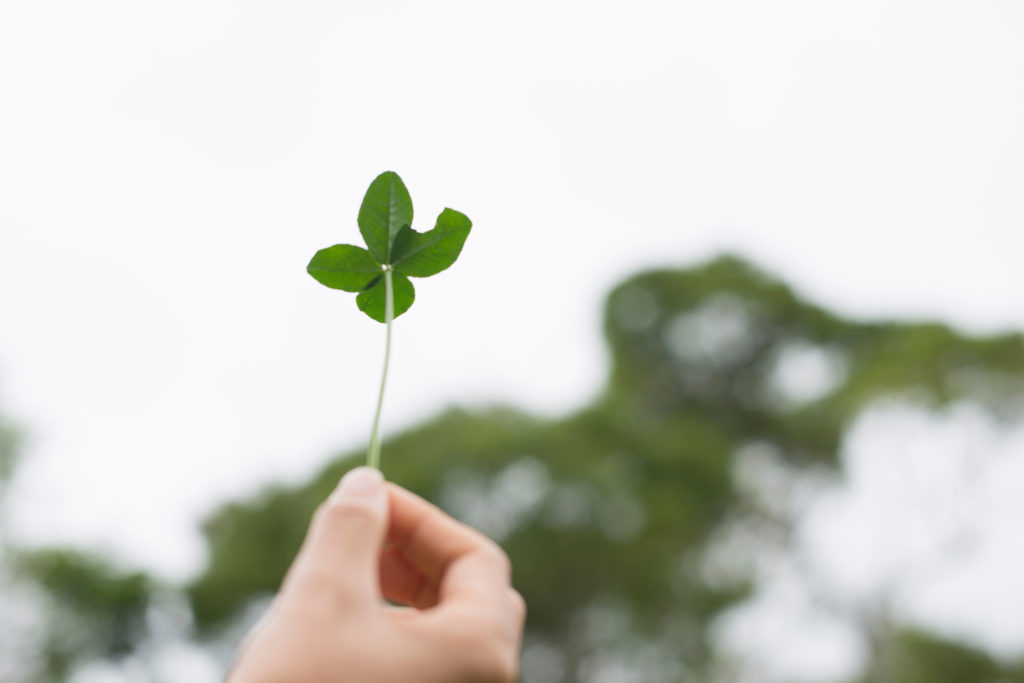
The more you mix, the more pleasant the harmony
The world has a population of about 7.7 billion, but how many of those people do we stop and talk with? Only a handful. We strike up a conversation for various reasons, but we probably don’t bother to talk with someone we don’t find interesting to begin with. We encounter people and get acquainted because something about them sparks our curiosity.
Once a conversation gets going, it is often fascinating. We discover common interests or similar values. Although thoughts and feelings are invisible, they do seem to permeate the air around a person. When one air meets and mingles with that of a similar nature—perhaps this is what makes two people establish a connection, feel sympathy, and develop an attraction.
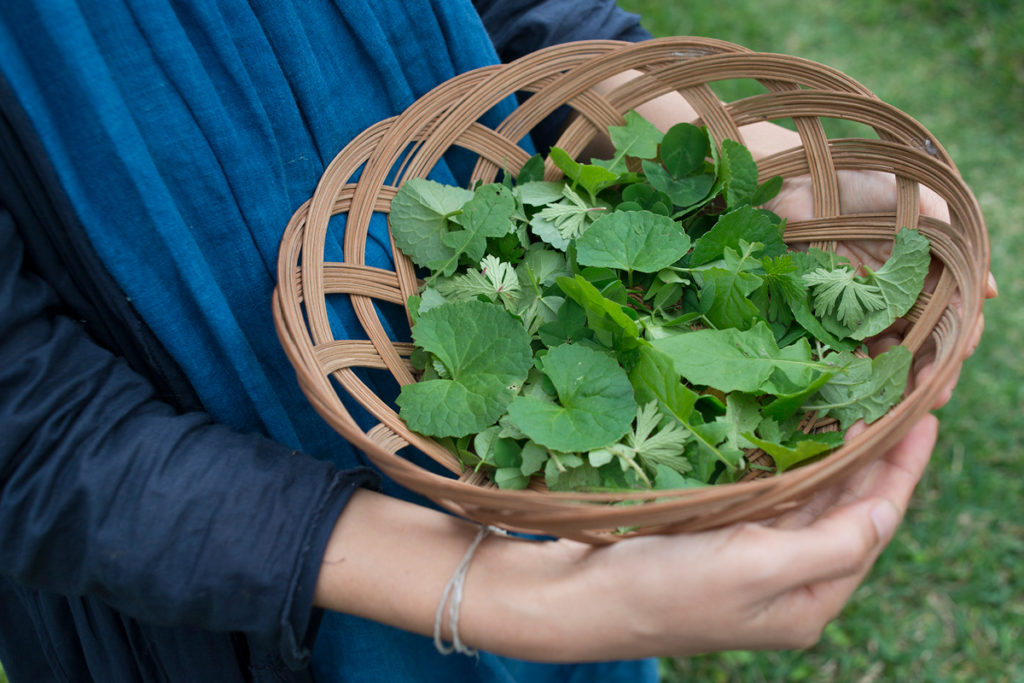
Ever since I was a child, I was curious about the litter in the street and wondered if I could do anything with it. As an adult, I traveled to one island after another—Ogasawara, Yakushima, and Okinawa to name a few—thinking about ways of dealing with the garbage we generate every day, and simply covering my destinations on foot and finding abandoned waste items.
Owing to the limited space for dumping trash on islands, it wasn’t unusual to find TV sets, bicycles, and other large unwanted items discreetly discarded in the long dense grass. Once, I even saw a household Buddhist altar left lying on its side. How can people live with nature and feel comfortable about it? The islands seemed to show me a clear answer.
At the time, I had no one with whom to share my concerns about litter and waste. A dozen years on, now I have more opportunities to meet people who pick up litter, reuse it, or in some way are trying to reduce waste in the first place. Many of the people I want to strike up a conversation with today can’t turn a blind eye to all the waste we generate.
Each of these encounters convinces me that I was right to carry on being concerned. Sometimes we are placed in a setting where no one shares our concerns, we are given the cold shoulder, and we feel isolated. But somewhere in the world, someone is sharing our thoughts, and we are guaranteed to find that person. This is why it’s okay not to change who you are or what you think. This was the lesson I learned from waste.
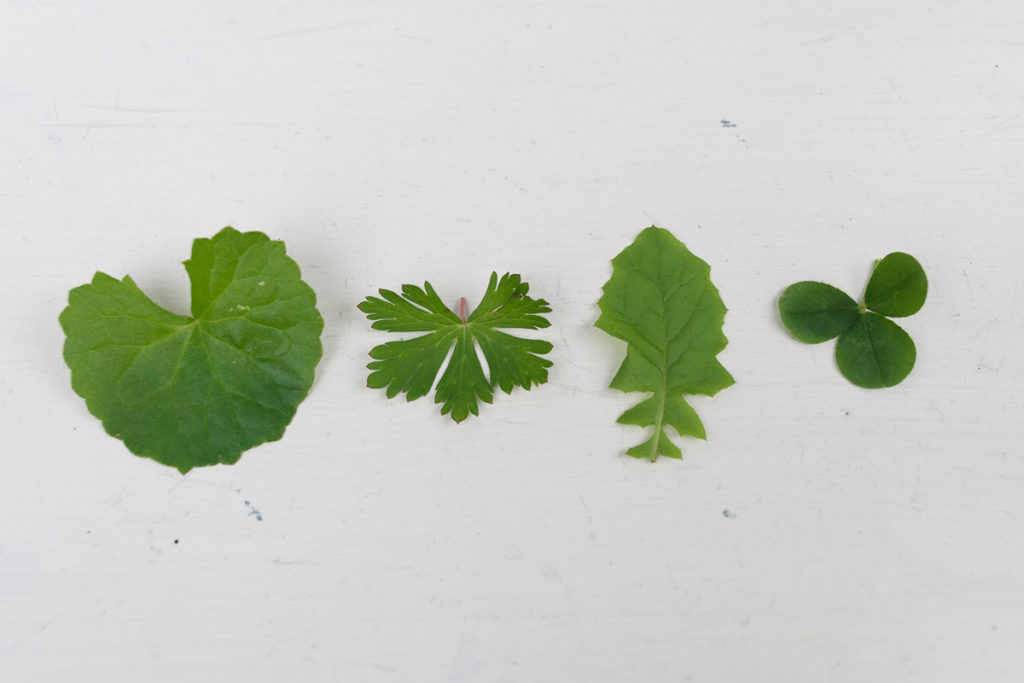
Whether a plant is seen as a weed or an object is seen as waste is up to the sense of values of the beholder. What I have learned by feeling the life force of plants in the wild is that the concepts of weed and waste did not exist from the beginning. Perhaps this sensation comes close to living with nature.
Our planet is home to various forms of life. Every plant has leaves of a unique shape and color. And here is an interesting secret to serving grass on a plate. If an individual plant tastes too strong or too bitter, try mixing several varieties together, and the flavor balances out. For a fruit salad, I mix as many as four varieties of grass growing in my neighborhood.
Admiring the varieties of grass I plan on mixing today, I am reminded of the relationship between people. The more you bring into the mix, the more pleasant the harmony.
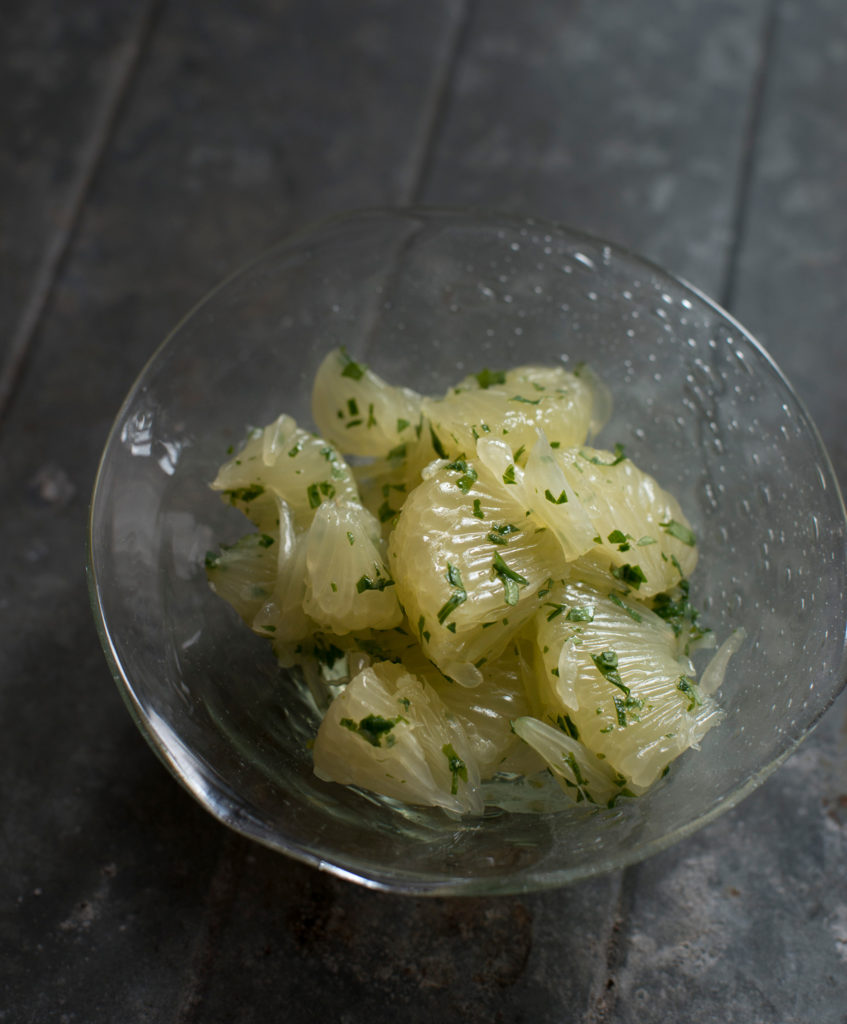
■Grass on the Plate Recipe 03
Grass and fruit salad
Ingredients
White clover, Indian pennywort, Carolina geranium, Yabu-tabirako, Fruit (sour pomero), Natural salt, Olive oil
Directions
1. Take the plants you have gathered, wash them in a bowl of water, wipe off the excess moisture, and finely chop the leaves.
2. Sprinkle the chopped leaves on the fruit (peeled sour pomero) and season with salt and olive oil. Any edible wild plant works with this recipe. Use as much or as little of whatever varieties you like. The stronger the flavor of the individual leaves, the more delicious the salad.
■Plants Index
Weeds in this story
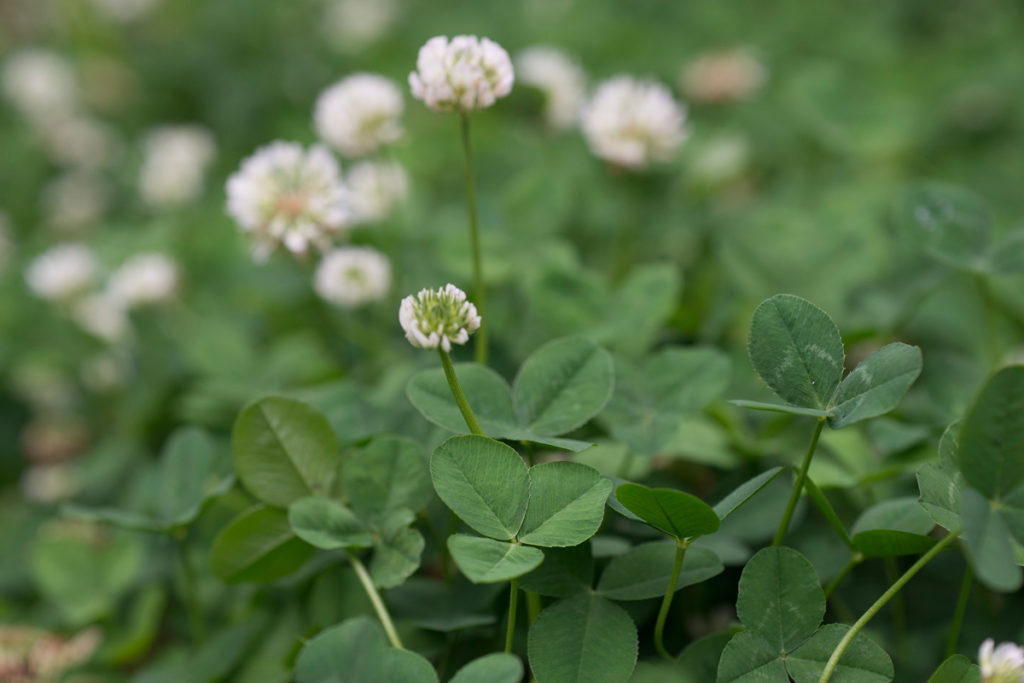
In premodern Japan, glass products imported from the Netherlands arrived in boxes filled with dried grass, which served as a cushioning material. The grass had white flowers, hence the name shiro tsume kusa, or “white filling grass.” In its native Europe, the plant is commonly called the white clover.
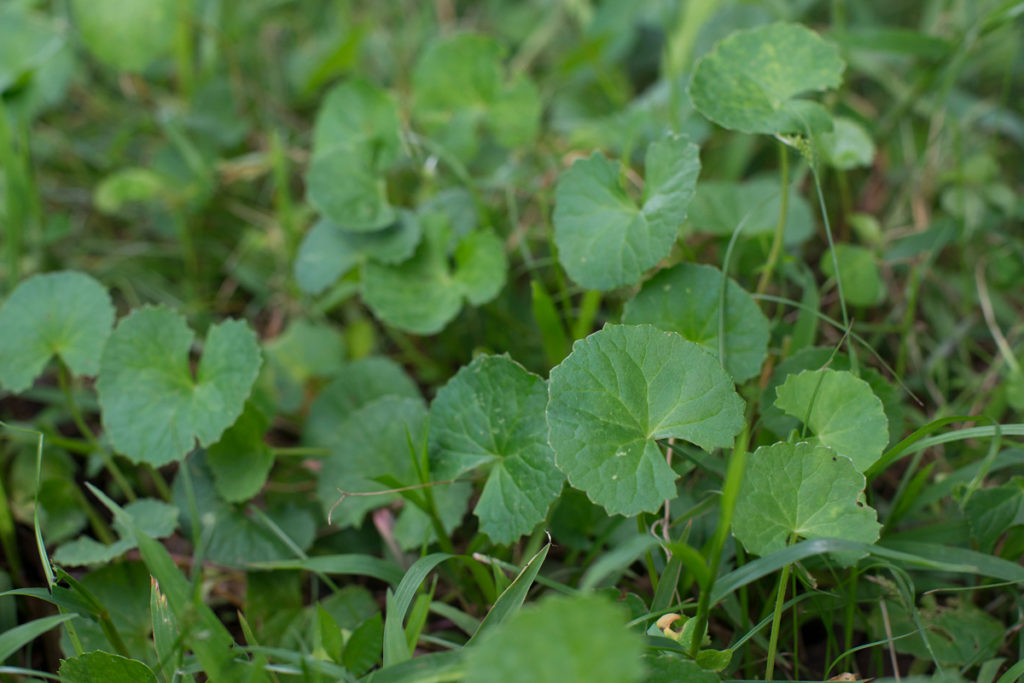
The Indian pennywort has been used in Indian and Sri Lankan Ayurvedic medicine for over 5,000 years. Used as a tonic, for the treatment of skin disorders, and for the prevention of lifestyle diseases, it is said to awaken the crown chakra and keep the left brain and the right brain in balance.
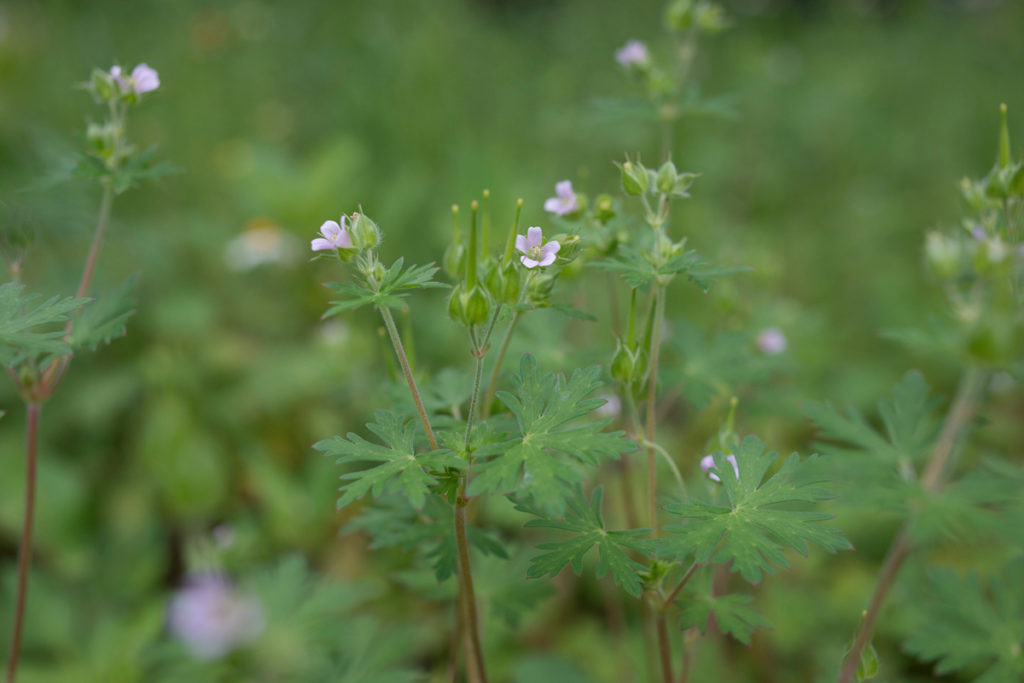
The Carolina geranium has deeply cleft leaves and produces pink flowers about 1 centimeter in diameter from spring to summer. It is a relative of the Japanese geranium, a native species that has long been used as a medicinal herb. The leaves are dried and steeped in hot water to make tea.
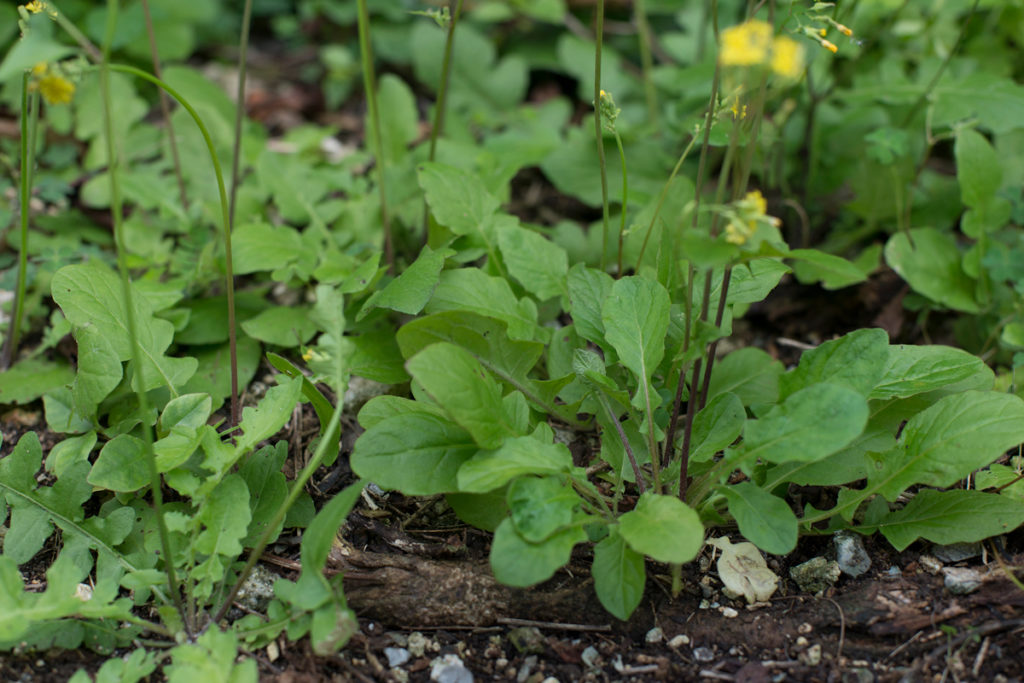
Yabu-tabirako is a relative of the nipplewort (kooni-tabirako), one of the traditional seven herbs of spring, but it grows in the bush, hence the name yabu. The leaves are soft and fuzzy but mild in flavor and can be eaten like baby leaves. When the flower dries out, it turns into a lovely small fluff.
Yoco Kawashima
As a child, Kawashima nurtured her love of “weeds” into a passion for soil and water. Guided by these memories in 2000 she began artistic activities focused on weeds, traveling to study how they are used. She then expresses their attraction in various forms such as food, drink, decoration, and therapy. Publications include Kusa to kurasu (Living with Weeds; Seibundo Shinkosha). Kawashima lives in Okinawa Prefecture. Arinomama ni ikiru (Life As Is; Lingkaran Books) released in late April.











